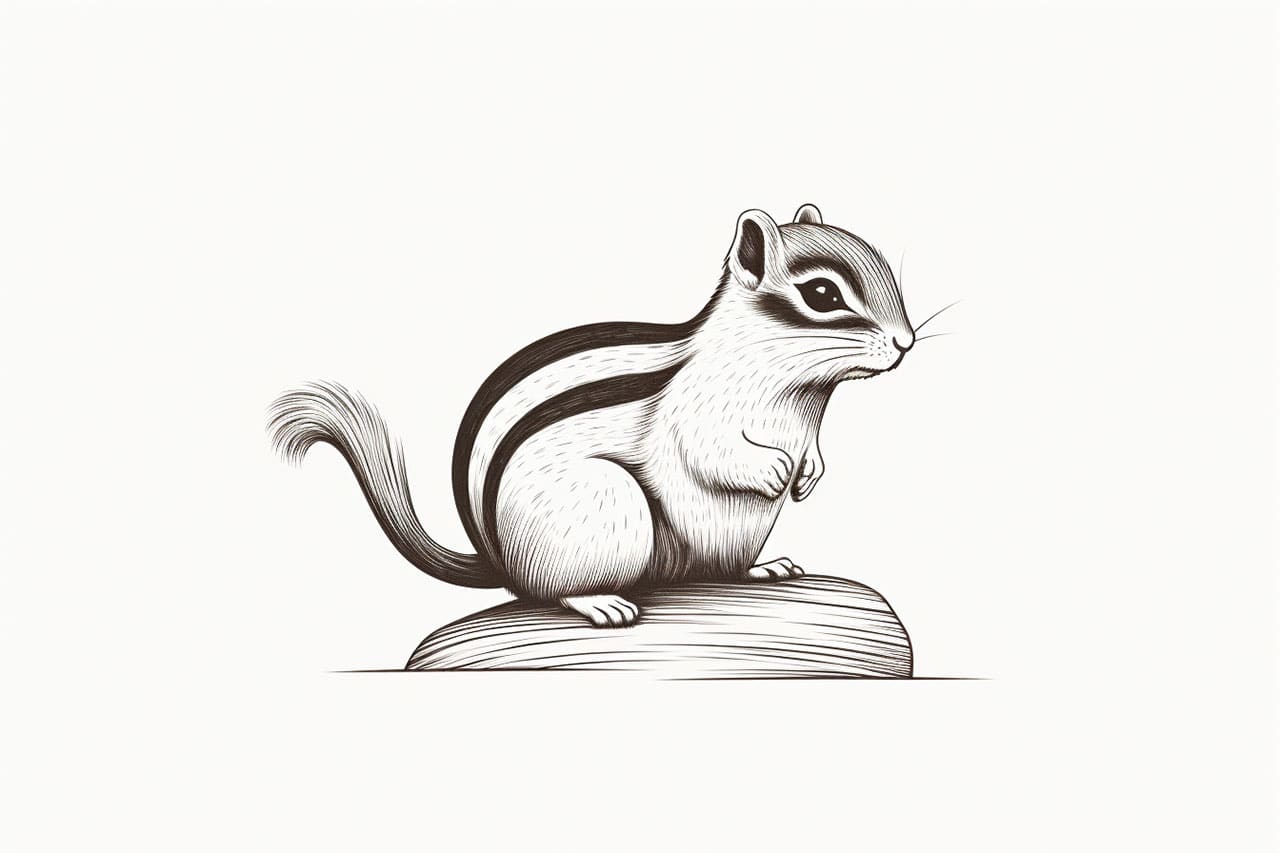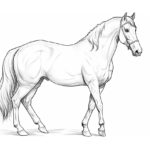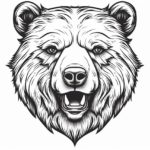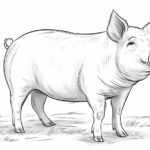Chipmunks are small, adorable creatures that many people find fascinating. If you’re interested in drawing these furry critters, you’ve come to the right place! In this step-by-step guide, I will walk you through the process of how to draw a chipmunk, from sketching the basic shapes to adding the finest details. So grab your pencils, and let’s get started!
Materials Required
To draw a chipmunk, you will need the following materials:
- A graphite pencil (HB or 2B)
- An eraser
- Drawing paper
- Colored pencils (optional)
Now that you have your materials ready, let’s dive into the steps to create your chipmunk masterpiece!
Step 1: Start with Basic Shapes
Begin by drawing a large oval shape for the chipmunk’s body. This will serve as the foundation for the rest of the drawing. Then, add a smaller circle on one end of the oval to represent the head. Position it slightly off-center to give the drawing a more dynamic look.
Step 2: Define the Head and Body
Next, divide the head circle into two halves horizontally. The upper half will be the chipmunk’s forehead, and the lower half will be its snout. To create the snout, draw a triangular shape at the bottom of the head circle. This will give our chipmunk a cute little nose!
Now, let’s define the body. Extend the oval shape you drew earlier by adding a curved line at the bottom. This will form the chipmunk’s back. Then, complete the body by drawing a slightly curved line connecting the head and body.
Step 3: Add the Facial Features
Time to give our chipmunk some personality! Draw two small circles for the eyes, positioning them on either side of the forehead. Inside each eye, draw a smaller circle for the iris. Leave a small section unshaded to add a touch of light to the eyes.
Below the eyes, draw a rounded triangle for the chipmunk’s nose. Add a small curve for the mouth, slightly below the nose. Finally, draw two small curves on either side of the head for the chipmunk’s ears. These curves should be slightly pointed at the top.
Step 4: Detail the Face
Now that we have the basic facial features in place, let’s add some finer details. Draw a tiny circle inside each eye to represent the highlight. This will make the eyes appear more lively. Next, add a few short lines above each eye to indicate the chipmunk’s eyebrows.
To make the chipmunk appear even cuter, draw a few small curves on each side of the mouth to represent the whiskers. Finish off the face by adding some fur lines on the chipmunk’s forehead and around the eyes.
Step 5: Sketch the Arms and Legs
Let’s move on to the chipmunk’s limbs. Draw two curved lines on either side of the body to create the arms. At the end of each line, sketch a small circle for the paws. These circles should be slightly flattened.
For the legs, draw two longer curved lines extending from the bottom of the body. Similar to the arms, add small circles at the end of each line to represent the feet. Don’t forget to add some lines to indicate the toes!
Step 6: Outline the Tail and Body
In this step, we’ll add the finishing touches to our chipmunk. Start by outlining the chipmunk’s bushy tail. The tail should be long and slightly curled. Add some curved lines within the tail to represent the fur.
Next, outline the chipmunk’s body, following the shape you sketched in the earlier steps. Use curved lines to define the contours of the body, arms, and legs. Take your time with this step, as it will add depth and dimension to your drawing.
Step 7: Refine the Details
Now that the basic shapes and outlines are complete, it’s time to refine the details of your chipmunk drawing. Pay attention to the chipmunk’s fur and add some strokes to represent the texture. Use short, curved lines to create the illusion of fur on certain areas, such as the tail, ears, and back.
Don’t forget to erase any unnecessary guiding lines you may have drawn in the earlier steps. This will ensure that your chipmunk looks clean and polished.
Step 8: Add Color (Optional)
If you want to take your chipmunk drawing to the next level, consider adding some color! Use colored pencils to bring your chipmunk to life. Chipmunks typically have brown fur with black and white stripes on their backs. Use light browns for the main body color, and add darker browns for shading and depth. Use blacks and whites to create the stripes on the back.
Remember to blend the colors well using smooth strokes. Take your time and have fun experimenting with different shades to achieve the desired effect.
Conclusion
Congratulations on completing your chipmunk drawing! By following these step-by-step instructions, you have learned how to capture the cuteness of these adorable creatures on paper. Remember, practice makes perfect, so don’t hesitate to try drawing chipmunks from different angles or in various poses.
Drawing chipmunks can be an enjoyable and rewarding experience. It allows you to explore your creativity while appreciating the beauty of nature. So grab your pencils and start sketching those chipmunks!
Gallery of Chipmunk Drawings
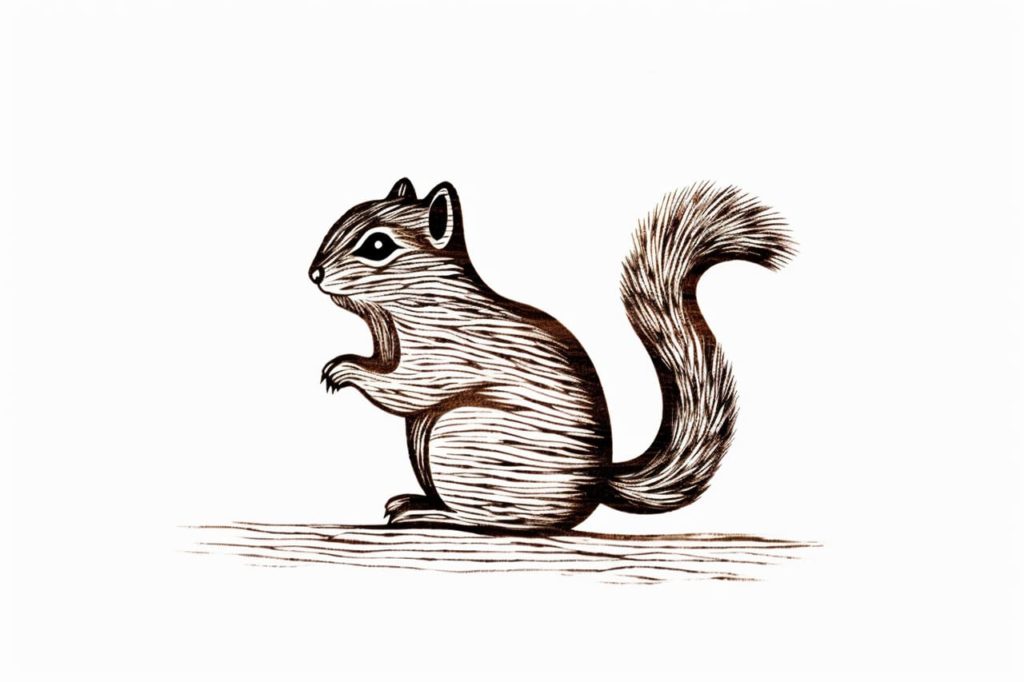
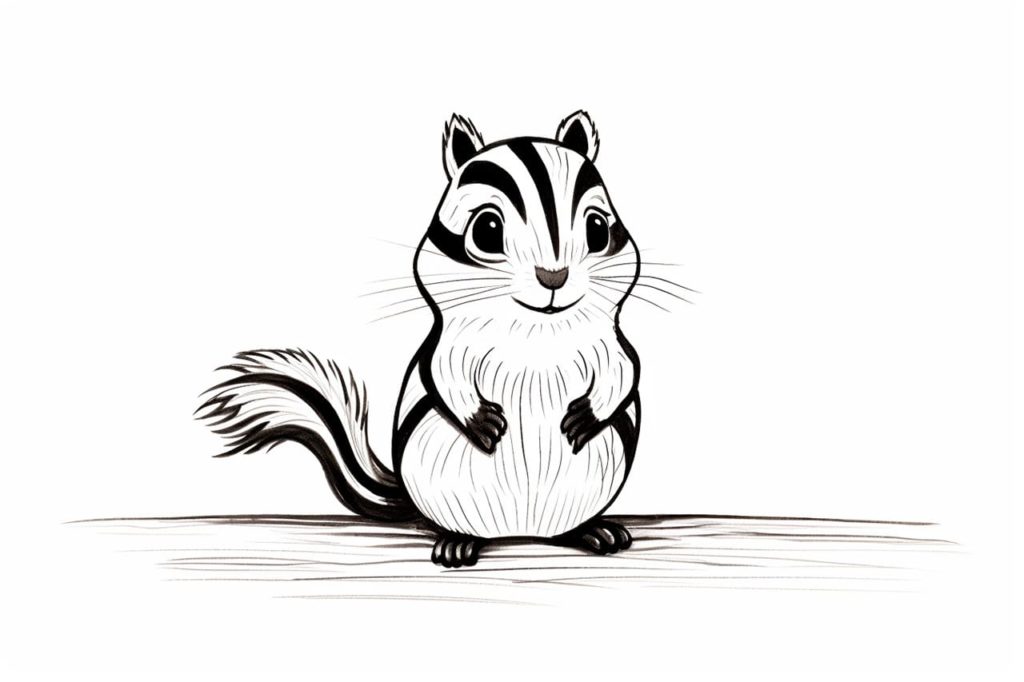
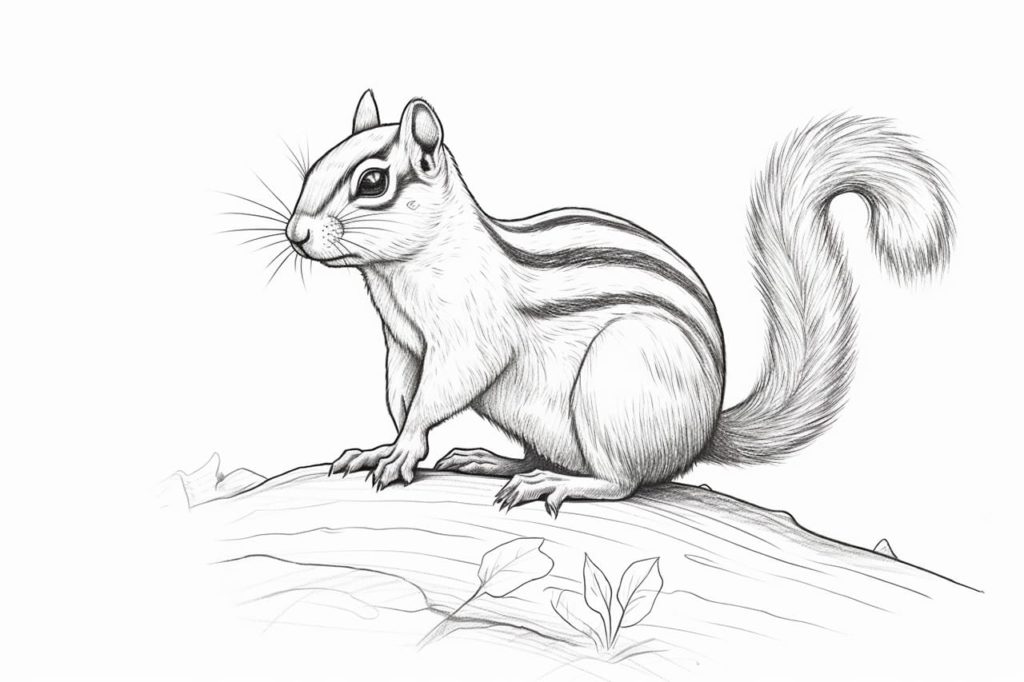
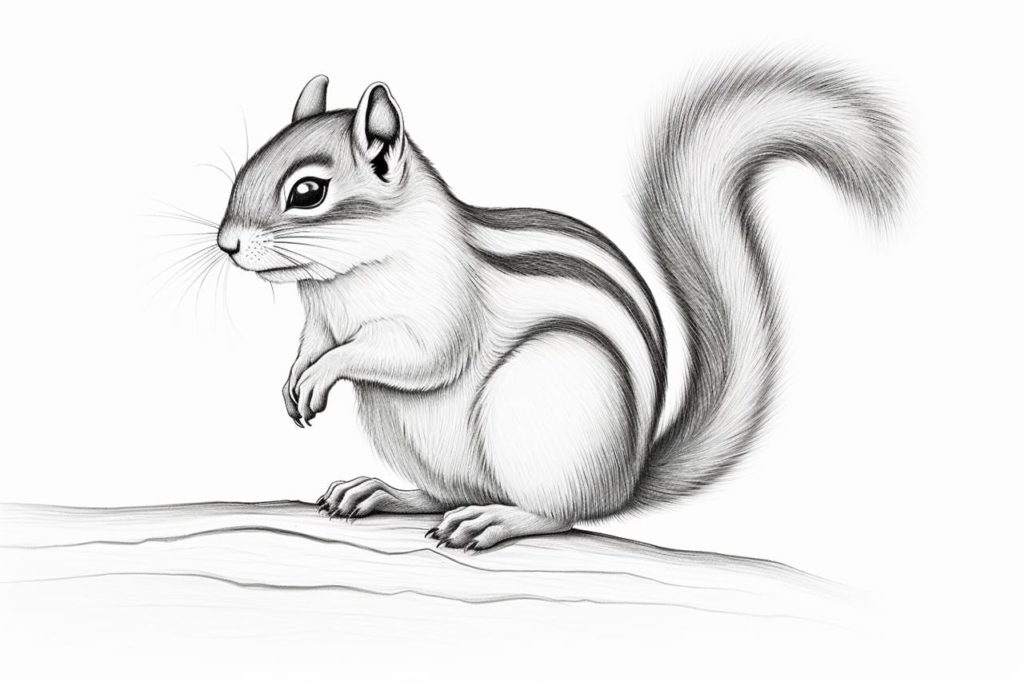
Suggestions for Scenes and Settings for How to Draw a Chipmunk
- In a Forest Clearing: A chipmunk scampering across a clearing surrounded by tall trees, with sunlight filtering through the leaves.
- Among Autumn Leaves: A chipmunk amidst a colorful array of fallen leaves, perhaps gathering nuts for the winter.
- Near a Brook: A chipmunk standing on a rock or the bank of a gently flowing brook, with reflections in the water.
- On a Tree Branch: A chipmunk perched on a branch, peeking out from behind leaves or pinecones, high above the forest floor.
- In a Backyard Garden: A scene with a chipmunk exploring a garden, possibly climbing in flower beds or near a bird feeder.
- During Winter: A chipmunk emerging from a snowy burrow or standing on a snow-covered ground, with bare trees or evergreens in the background.
- Inside a Log: A cozy interior view of a chipmunk’s home inside a log, surrounded by stored nuts and seeds.
- At the Edge of a Pond: A chipmunk drinking from a pond or investigating the water’s edge, with lily pads and reeds.
- Under a Starry Sky: A chipmunk sitting on a rock or stump in a clear night setting, with a star-filled sky and perhaps the moon in the background.
- In a Meadow: A chipmunk moving through a meadow full of wildflowers and grasses, possibly with butterflies or other insects fluttering nearby.
Fun and Interesting Facts About Chipmunks
The chipmunk, a small and enthusiastic creature often recognized by its cheek pouches and striped fur, inhabits various regions across North America. Known for their cheeky behavior and energetic movements, chipmunks add a lively touch to the natural landscapes they inhabit. Here are some delightful insights into the world of chipmunks:
Cheeky Storage Units
Chipmunks possess expandable cheek pouches which they use to store food. These cheek pouches can stretch to be nearly the size of their entire body, allowing them to gather a substantial amount of food in a short period of time.
Masters of Hoarding
These critters are known for their hoarding behavior. They gather food diligently during the warmer months and store it in their burrows. This stored food sustains them during winter when they enter a state of torpor, a light form of hibernation.
Burrow Architects
Chipmunks are adept at creating complex burrow systems. Their burrows can be quite extensive with multiple entrances, tunnels, chambers, and escape routes, providing them with shelter, storage space, and protection from predators.
High-Pitched Communicators
With a range of vocalizations, chipmunks have a unique way of communicating. Their high-pitched chirps can signify various things including warning calls to alert others of nearby danger.
Varied Diet
Chipmunks have a varied diet that includes seeds, nuts, berries, fruits, fungi, and occasionally insects and small birds. Their diverse diet helps them to thrive in different environments.
A Peek into Forest Health
Interestingly, chipmunks play a role in forest ecology. By foraging and hoarding seeds, they help in the dispersion of seeds which contributes to forest regeneration.
A Small Creature with a Big Impact
Despite their diminutive size, chipmunks contribute significantly to their ecosystems. Their hoarding and foraging habits not only ensure their own survival but also play a part in maintaining the health and vitality of the forests they call home. Through their lively antics and industrious nature, chipmunks continue to charm those who encounter them, while quietly playing a crucial role in the circle of life.

